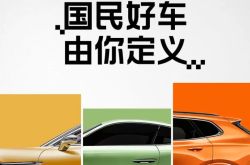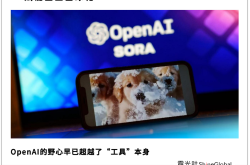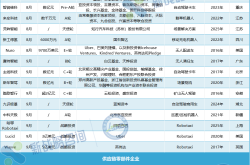Can Fuel-Powered Vehicles Weather the Storm?
![]() 10/17 2025
10/17 2025
![]() 541
541
The ongoing debate about when new energy vehicles (NEVs) will entirely supplant fuel-powered vehicles persists, with recent market developments adding new twists to the narrative.
According to the latest data from the China Association of Automobile Manufacturers (CAAM), sales of traditional fuel-powered passenger vehicles in China soared to 902,000 units in August, marking a 13.5% year-on-year increase. By the end of August, fuel vehicle sales had demonstrated positive growth for three consecutive months.
Previously, the rapid ascent of NEVs led to speculation that fuel vehicles were on the brink of exiting the historical stage in the near term. However, recent market data suggests that the fuel vehicle market retains substantial significance, with concerted efforts from various brands hinting at a potential market resurgence.
Statistics reveal that domestic sales of traditional fuel vehicles reached 13.989 million units in 2024, experiencing a 17.3% year-on-year decline. From January to August this year, domestic sales of traditional fuel vehicles stood at 8.747 million units, with the year-on-year decline narrowing to just 0.3%, and showing consistent growth over the past three months. Since the start of the year, numerous domestic and international automotive brands have also affirmed their commitment to not abandoning fuel vehicles.
From Porsche's decision to halt its pure electric vehicle plans and refocus on internal combustion engines, to GAC Toyota's simultaneous launch of intelligent versions of four fuel vehicle models—Sienna, Highlander, Camry, and Frontlander—more and more traditional brands are striving to strike a balance between fuel vehicles and the intelligent demands of the new era. Additionally, Chery Automobile, a strong performer in the traditional fuel vehicle sector, concluded its 21-year journey and finally went public on September 25, seemingly injecting a boost of confidence into the development of fuel vehicles.
Yang Tao, General Manager of the Automotive Product Division at J.D. Power China, posits that amidst the swift penetration of NEVs, traditional fuel vehicles not only retain robust competitiveness but also harbor significant potential for enhancement. Lower fuel consumption, more appealing styling, and competitive pricing compared to equivalent NEVs provide consumers with compelling reasons to opt for fuel vehicles in the present.
Pricing Emerges as a Pivotal Factor
From January to August this year, the penetration rate of NEVs in the domestic passenger vehicle market stood at 55.3%, with fuel vehicles still catering to nearly 45% of consumer demand. In today's fiercely competitive automotive market, pricing has emerged as a crucial tool for attracting consumers.
According to CAAM, the rebound in the domestic fuel vehicle market is intricately linked to the product positioning and pricing strategies of traditional automakers. To vie for market share with NEV products, several traditional automotive brands, including Japanese and Chinese marques, have slashed the prices of their fuel vehicles to below RMB 80,000 this year while enhancing their features. This strategic move has significantly bolstered the cost-performance ratio of fuel vehicles, luring a substantial number of consumers.
A prime example is SAIC-GM, which, after experiencing declining sales, capitalized on the opportunity to introduce a "fixed-price" strategy in 2024. The Buick Envision Plus, priced attractively at RMB 169,900, swiftly gained market acceptance. Subsequently, SAIC-GM extended the "fixed-price" strategy to more product lines, resulting in a V-shaped recovery in brand sales and a gradual emergence from the low point.
Since the start of the year, an increasing number of brands have embraced the "fixed-price" model, with more transparent preferential policies enabling traditional brands to explore new market rules.
According to data from the China Passenger Car Association (CPCA), the prices of conventional fuel vehicles had been on a continuous upward trajectory previously, with a noticeable market contraction in the low- and mid-end segments, while the high-end segment contracted more gradually. Consequently, the average selling price surged from RMB 150,000 in 2019 to RMB 183,000 in 2023. In 2025, with a relatively rapid contraction in the high-end fuel vehicle segment, the average price for January-August decreased to RMB 170,000, and further to RMB 169,000 in August, indicating a gradual stabilization in fuel vehicle consumption.
Cui Dongshu, Secretary-General of the CPCA, pointed out that in August 2025, the promotional intensity for traditional fuel vehicles remained stable at 22.9%, a slight decrease of 0.5 percentage points from the previous month but an increase of 0.9 percentage points year-on-year. Faced with a complex scenario of increased external shocks and internal difficulties and challenges, robust counterbalancing measures have underpinned the economy and automotive market in the first half of the year.
Coexistence of Fuel and Electric Vehicles Emerges as a Trend
Since the start of the year, several multinational automakers, including General Motors, Mercedes-Benz, Stellantis, Mazda, Subaru, and Toyota, have announced the temporary suspension of their comprehensive electrification strategies, opting instead to continue investing in internal combustion engine technology. Many Chinese automakers have also adopted this "dual-path" development strategy, with Great Wall Motors unveiling its "Pan-Internal Combustion Engine Strategy" at the 2025 Shanghai Auto Show.
Several brands, including Geely, Volkswagen, and Dongfeng Honda, have also publicly affirmed that fuel vehicles remain a pivotal part of the automotive market and that they will continue to invest in this segment. The notions of "coexistence of fuel and electric vehicles" and "equal intelligence for fuel and electric vehicles" have also emerged as key directions for the future of many traditional brands.
In March, during the company's 2024 earnings announcement, Geely Group's Chief Executive Officer, Gan Jiayue, stated, "The fuel vehicle segment will not only not contract but will continue to strengthen." In Gan's view, despite China's leading position in NEV penetration, the popularization of NEVs in Europe and other major markets is still in its infancy, and traditional fuel vehicles will continue to command a significant market share for a considerable period.
Wu Yingkai, Secretary of the Party Committee and General Manager of FAW-Volkswagen Sales Co., Ltd., also remarked, "The current market competition has escalated from a price war to an intelligent driving war. We will adhere to the strategy of 'coexistence of fuel, electric, and hybrid vehicles.'"
Currently, the automotive industry is undergoing structural transformations. However, from both the consumer perspective and the overall profitability of the automotive industry, the coexistence of NEVs and fuel vehicles is not only conducive to meeting diverse consumer needs but also to driving continuous improvement and maturation of NEV technologies.
Furthermore, Cui Dongshu also highlighted that the coexistence and balanced development of fuel and electric vehicles are essential demands for the global expansion of the automotive industry. Data shows that in the first seven months of 2025, China exported a total of 3.68 million vehicles, marking a 12.8% year-on-year increase. Among them, exports of NEVs surged by 84.6% year-on-year to 1.308 million units, while exports of traditional fuel vehicles decreased by 7% year-on-year to 2.373 million units, still representing the main export force.
"Chinese automobiles have achieved an impressive overtaking maneuver on the new energy track, but there is still market demand for fuel and hybrid vehicles. Autonomous brands should not be overly 'specialized'," Cui Dongshu emphasized.
This article is an original piece by China News Auto. We welcome sharing among our peers. For media outlets requiring reprints, please credit the author and source at the beginning of the article. We strictly prohibit any media or self-media from creating video or audio scripts based on the content of this article. Violators will be held legally responsible.






